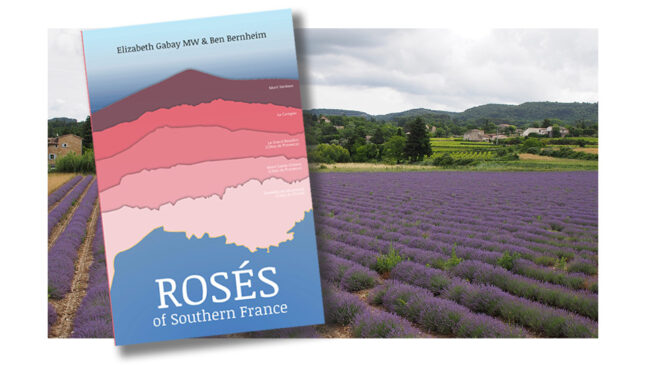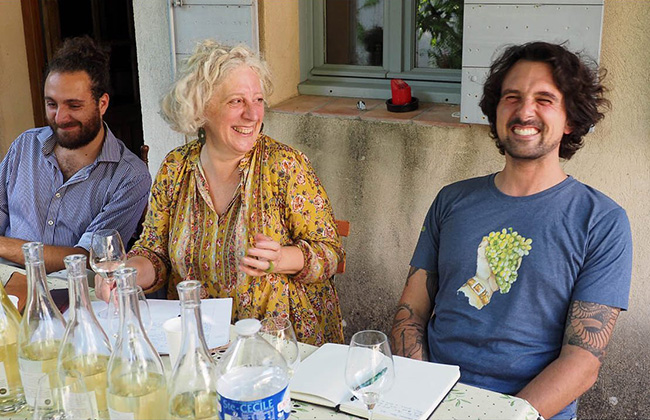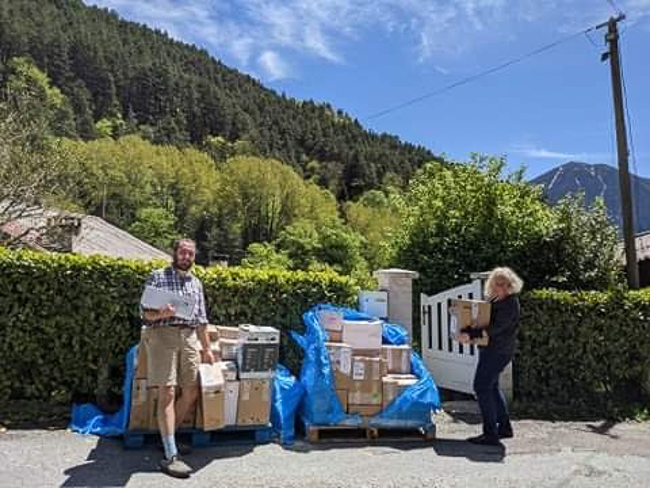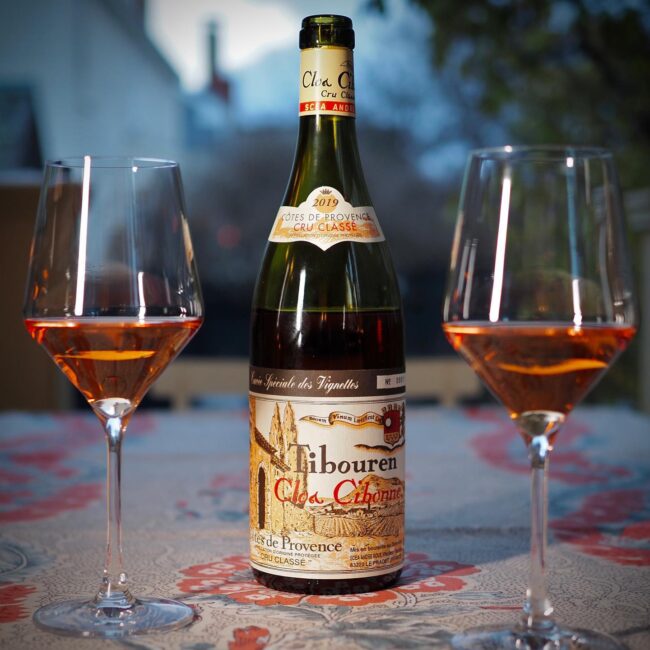Gabay and Bernheim’s Rosés of Southern France should be in your wine library
by Susan Manfull
The recent publication of Rosés of Southern France is cause for great celebration among casual rosé drinkers and oenophiles alike. Elizabeth Gabay MW and Ben Bernheim have written an engaging and comprehensive book that not surprisingly centers on Provence rosé but it also includes rosés from all other neighboring regions in the South of France. Their depth of knowledge alone — gathered over decades of tastings and conversations with winemakers — coupled with the duo’s exceptional palates and sensible vocabulary make this a book appealing to readers with a wide range of interests (except those driven by who has the most popular Instagram post).
Beginning with the seemingly elementary question, “What is a Rosé?,” the authors make clear the answers are varied. ‘What is a Southern French Rosé?” is no easier to answer. It is absolutely not defined by the ubiquitous “pale, dry, and fruity” answer that, years ago, I also believed it to be the hallmark characteristics. In fact, as any serious rosé drinker knows, color should not be part of the definition at all as some of the best rosés range in color from that of onion skins to being indistinguishable from light red wines. Dry, yes, and fruity, to varying degrees.
Gabay and Bernheim emphasize the diversity inherent in rosés from this part of the world. Their detailed descriptions of the various terroirs, grape varieties, and winemaking techniques of Provence, the Rhône Valley, and Languedoc leave the reader wondering why one would ever expect all rosés to be pale in color. They continue on to explain why many contemporary consumers came to expect good rosés to be pale, and why winemakers strived to make pale “Provence-style”rosés. Historically, as the authors explain, this has not been the case (Tavel known as “wine of kings and king of wines” for many years comes to mind) and, they express hope that consumers will come to embrace the variety of possible colors of rosé. (In moments of exasperation, I’ve heard Gabay bemoan the inclusion of color at all in one’s wine tasting notes.)
As Gabay and Bernheim make clear, “Provence is the beating heart of the modern rosé revolution.” Hence, they write at length about this region. They do an excellent job describing the major appellations in Provence, including the dénominations géographiques within Côtes de Provence, and the Indications Géographiques Protégées (IGP) designations that cover Provence (and beyond). They stress the relevance of noting these dénominations and the importance of doing so, noting their similarity to the named Villages of the Côtes du Rhône and that Côtes de Provence AOP is working with the Institut national de l’origine et de la qualité (INAO) to elevate their status to crus. There is some helpful discussion of how to distinguish the dénominations on the palate.
The section on rosés in the Rhône Valley is a stand-out as, aside from Tavel, the very existence of rosé in this region — renown for its reds and a few stellar whites — is not given much space in most chapters about this region. Gabay and Bernheim astutely observe that, “…nowadays it probably is the southern French region which suits the widest range of palates: from light, fresh Provence-style wines to more full-bodied pale reds using distinctive and less well-known grape varieties.” Interestingly, they make the conscious decision to include the Luberon appellation in the chapter on Provence, where the area belongs culturally and where the rosés belong stylistically. Having spent extended periods of time in the Luberon, I completely agree.
The role of terroir in determining the diversity of rosé (and wine in general, of course) receives a lot of attention in this book, and rightfully so. It is exactly this type of discussion to rosé winemaking and marketing that will elevate the status of rosé in the wine world.
The authors describe the changes that have occurred in the rosé industry in the last thirty years or so, especially in Provence but also rippling across its borders. It is an understatement to say that making rosé is no longer an afterthought or a way to squeeze a little cash out of a mediocre red production. The role of winemaking itself as being instrumental in improving the quality of rosé is discussed, including the various procedures that can be followed in the vineyard and in the cellar. In contrast to other writers, Gabay and Bernheim do an admiral job of conveying a lot of information on this subject in a simple manner. However, they are adamant that the oft-repeated idea that “winemaking is all that matters” is patently false.
The “Top of the Pyramid” producers are presented and, arguably, are the movers and shakers in this industry who propelled rosé to its current heights. (How the modern rosé revolution occurred is beyond the scope of this book.)
Gabby and Bernheim made the brilliant but highly unusual decision to include a chapter devoted to aged rosé and vintage reports in a book on rosé. Even just a few years ago, it was rare to hear mention of aged rosés, known as rosés de garde. The very phrase was deemed an oxymoron by all but a few producers. But as the category of rosé is elevated, expectations — and curiosity —challenge the winemaker. Many more winemakers are quietly responding and I hope consumers will follow their lead. It is a fascinating subject that requires some education to appreciate these rosés. Including a chapter on this subject is a huge step forward.
A shout-out for including so many maps which really help readers understand the regions they are learning about. Also worthy of a shout-out is their section, “Rosé Vocabulary.” Wine writing is notoriously difficult to decipher but this duo is very precise in their descriptions of wines and, having had the pleasure of tasting with them on many occasions, I can report that they are spot on and downright amazing in their specificity of describing wines.
Gabay and Bernheim clearly acknowledge the importance of biodynamic, organic, sustainable, regenerative and natural approaches to winemaking but don’t include a chapter on these types of viti- and vini-culture. They do weave in information on these approaches throughout the book, even acknowledge wineries for their social engagement (such as Château Barbebelle). By the time they publish their next book, these approaches will have matured in the South of France and I suspect we may find a designated chapter.
This book is not a collection of wine recommendations; however, the authors do provide examples of benchmark wines that reflect the various terroirs, grape varieties, and winemaking techniques. Talented winemakers and higher price bracket wines also include examples. Even the section on specific wines made by the “Top of the Pyramid” producers does not recommend specific producers but rather the describes what sets them apart from the others. By the time you are finished with the book, you have the tools to make selections of rosés that will better match your palate (and pocket book).
Rosés of Southern France is an outstanding resource, highly readable and engaging. Consumers who report pools and beaches to be their preferred venue for this beverage will be inspired to elevate the occasion for imbibing rosé and aficionados who already serve rosé on white linen tablecloths will be propelled to include this book in their wine libraries where they will find themselves frequently reaching for it.
This book may be purchased on Amazon, please click here





Wow – so much to get out of this book! I am so glad to hear they have discussed the range of colors of rosé. I was shopping for some rosé with a friend evenly and saw a bottle from the Veneto (which amused me, but I could find no information on the cépages, so didn’t buy it) but my friend remarked that it wasn’t a rosé — he could not believe a rosé could be that pale – paler than a Chardonnay and only slightly tinted to pink.
Ooh. And the aging of rosë wines — so important to being that to the forefront. And I think the maps will be really useful for me, as someone who writes about rosé quite often — it can get so confusing.
I can’t wait to get a copy — thanks for a wonderful review, Susan!
Wow! What a fabulous review Susan. Now I find myself at 5:00 a.m. – thirsty. For rosé. From southern regions of France.
What a treasure trove for rosé aficionados and those who may now be interested in enthusiastically pursuing that path with informed knowledge.